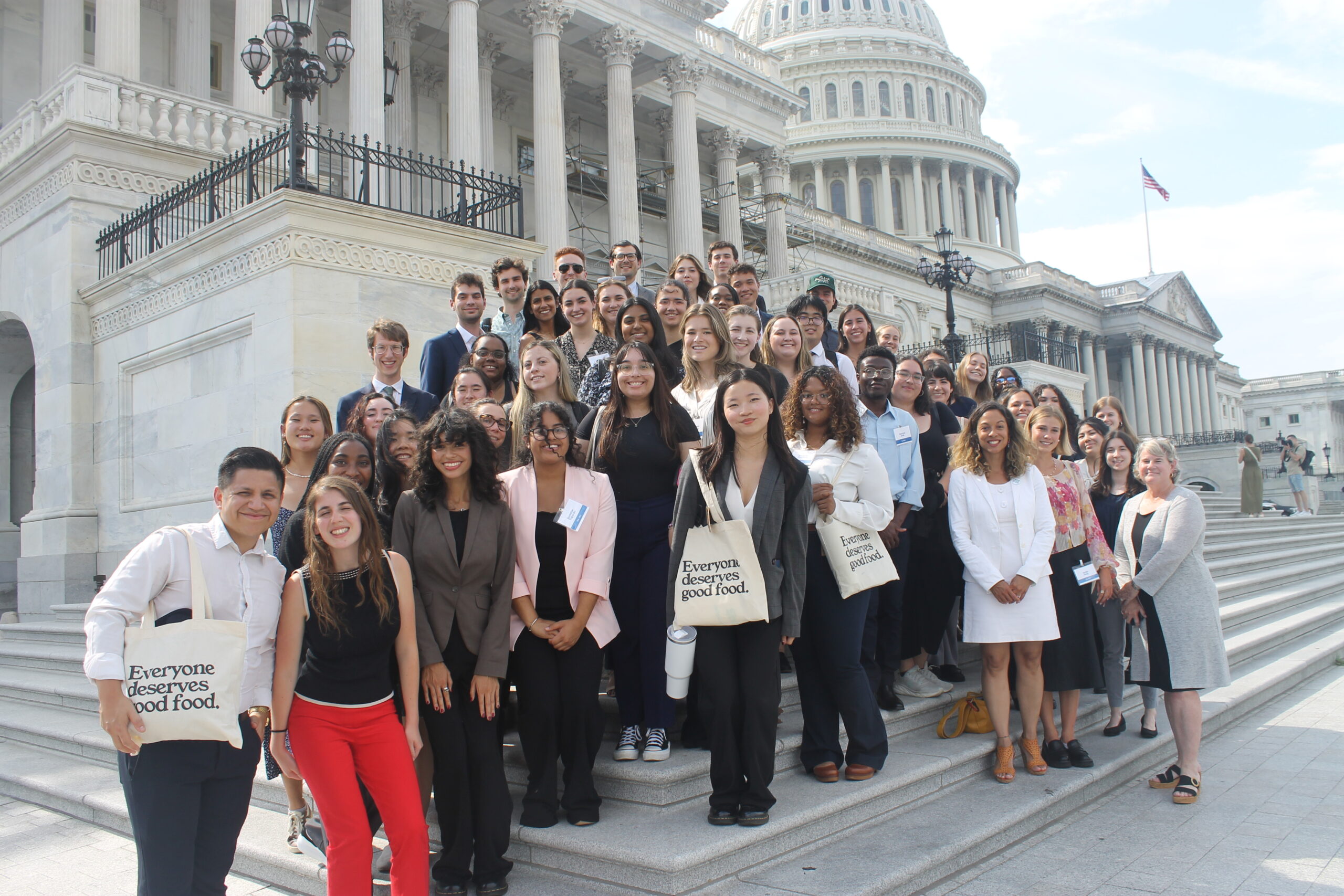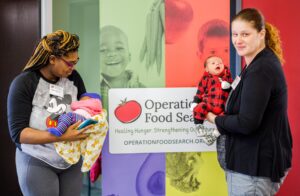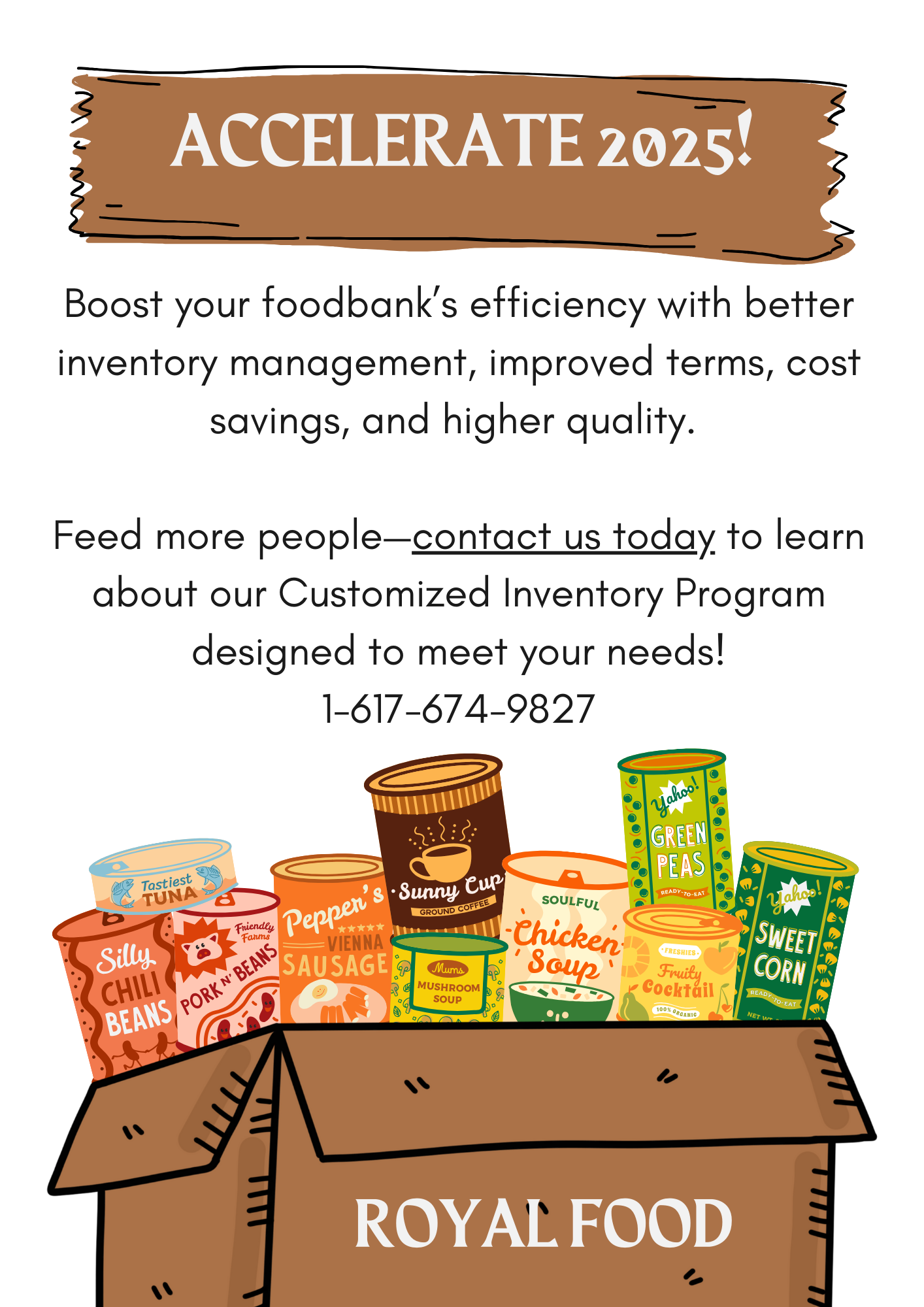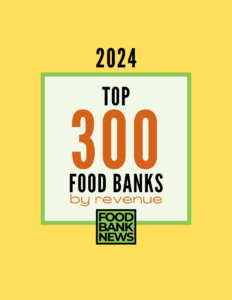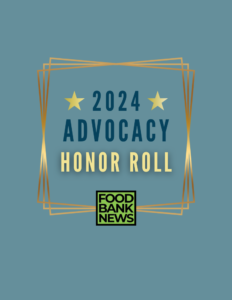GUEST OPINION BY REGINA HARMON OF FOOD RECOVERY NETWORK and LUCY SHANKER OF FOOD SYSTEMS COLLABORATIVE — The prevalence of hunger among Generation Z demands action. According to a May 2024 report from Purdue University, 36% of Gen Z households had to draw from savings or borrow money to purchase food in the last 12 months, and 29% of Gen Z households experienced food insecurity in the previous 30 days, far higher than the rate for other generations (see chart). Furthermore, a July 2024 report from the Government Accountability Office (GAO) report highlighted that approximately 4 million college students in the U.S. lacked access to sufficient food in 2020.
Without intervention, this problem will continue to grow. By 2030, Gen Z is projected to become the predominant demographic in all regions, with the highest documented rate of food insecurity compared to any generation in recent history. Our collective action can ensure that no individual, especially college students and Gen Z, has to endure the challenges of food insecurity.
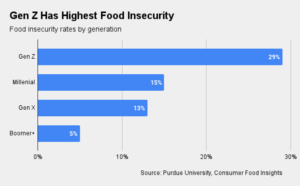 In addition to advocating for measures that increase long-term financial stability, such as raising the minimum wage, which is directly connected to the federal work-study hourly rate, or canceling student debt, we can help make an immediate impact on college students by increasing access to nutritious foods.
In addition to advocating for measures that increase long-term financial stability, such as raising the minimum wage, which is directly connected to the federal work-study hourly rate, or canceling student debt, we can help make an immediate impact on college students by increasing access to nutritious foods.
For individuals facing food insecurity, the Supplemental Nutrition Assistance Program (SNAP) is a crucial avenue for obtaining nutritious food. This government program, formerly known as food stamps, provides electronic benefits to low-income households, which can be used to purchase food.
Unfortunately, as the current wave of Gen Z individuals reaches adulthood and becomes eligible to apply for SNAP on their own, college students experience unfortunate obstacles in accessing SNAP benefits, impeding their ability to succeed.
We have the power to make changes to reduce these barriers and end hunger.
Educating students about SNAP is essential. Many students aren’t even aware of the program’s name, let alone that SNAP exists in the first place. Without this foundational knowledge, students don’t know where to begin to apply. Research shows that 59% of eligible college students don’t utilize this benefit.
Colleges and universities can take action by incorporating SNAP education into their financial aid application processes and student orientations. Student Affairs departments can develop external partnerships with local hunger relief organizations or human service agencies and invite them to participate in student activity fairs to help educate their student body about SNAP and other benefits.
Another crucial step is simplifying the application process. Complex procedures often deter individuals from applying for benefits. Colleges and universities can facilitate access to SNAP by training financial aid counselors to assist students with the application process. As students apply for financial aid, offering SNAP application assistance in tandem is a great place to start. Additionally, student health centers can incorporate eligibility screenings to gauge food security and offer referrals to community partners for application assistance.
Finally, encouraging students to advocate for themselves is tantamount to change. For example, the current federal work requirements for full-time college students create significant barriers to SNAP eligibility. Adjusting these work requirements could increase SNAP access and reduce hunger among college students, but it necessitates political action.
Approximately 41 million members of Gen Z, including 8 million first-time voters, will be eligible to participate in this year’s elections. If Gen Z advocates for themselves and exercises their political power, this huge voting bloc presents a real opportunity to drive tangible progress toward making access to SNAP easier for college students. Their actions could ensure SNAP funding is not cut, remove barriers to the application process, and increase eligibility for college students—all leading to end food insecurity.
Any person of any age can contact elected officials on behalf of Gen Z. Find out who they are here. Get used to calling them. Elected officials have staff whose job it is to take your calls and listen. Food Systems Collaborative and Food Recovery Network work to make the process easy and often have calls to action when legislation is up for review, and emails and calls are urgently needed.
Sign and write petitions for legislation that address the issues outlined above, such as this one. A petition with an influx of signers can have increased weight with congressional members. Websites like Change.org let the petition creators pull the number of signers from each city and state to educate legislators on how connected the petition is to their local constituency.
Find opportunities to advocate in real life, like the recently hosted Gen Z Food & Hunger Summit. These are crucial opportunities to show up in person to amplify a cause. Stay current with future opportunities by following Food Systems Collaborative. And finally, students can take immediate action to alleviate hunger in their college communities by getting involved with Food Recovery Network, founding a chapter or joining one on their current campus.
These actions matter. Landmark progress can come from youth advocacy. Together, with focus, we can begin to end food insecurity for an entire generation. – Regina Harmon and Lucy Shanker
Regina Harmon is the Executive Director of Food Recovery Network. Lucy Shanker is the communications lead at Food Systems Collaborative.
PHOTO, TOP: Gen Z college students stand on Capitol Hill during the Congressional Hunger Center’s and Food Systems Collaborative’s 2024 Gen Z Food & Hunger Summit.
Like what you’re reading?
Support Food Bank News
